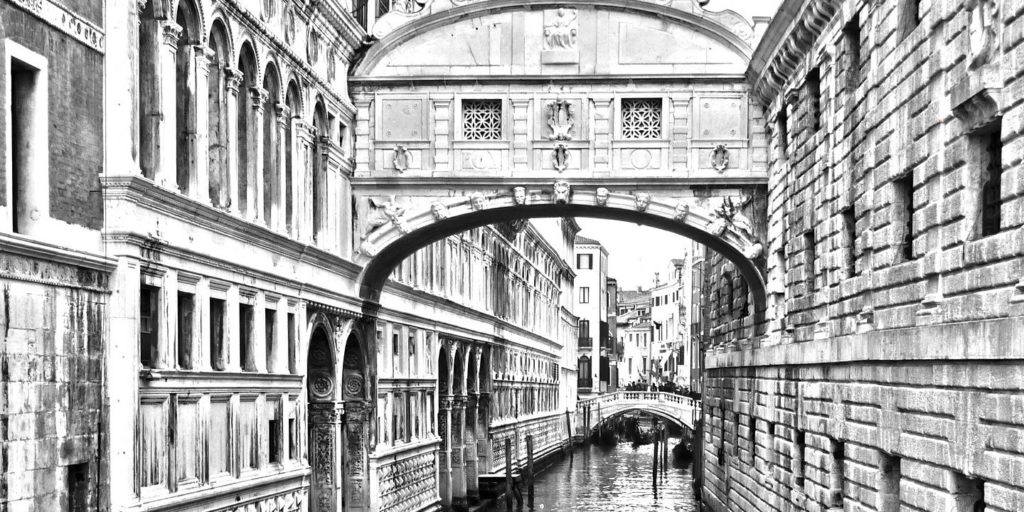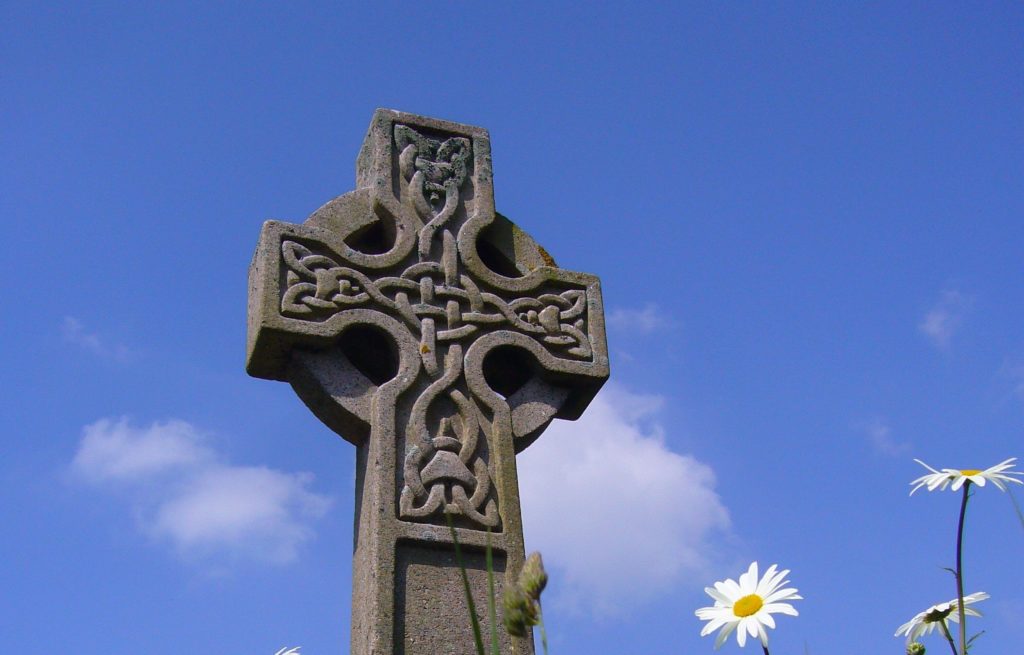On Prince Street in lower Manhattan, about a decade ago, there used to be a storefront decorated entirely in zebra print. This alone would have made the store stand out in any city, but this was Prince Street, the main thoroughfare in SoHo. The shop’s neighbours – luxury purveyors, boutiques, and upscale bakeries in staid beige and white, all with sleek salespeople in black outfits – made the place look less like an anomaly than an aberration, a malignancy. It was called Girl Props, a name that it bore proudly on its front in bright pink and yellow bubble letters, the kind a preteen might stencil onto a notebook cover. Except for a subset of enthusiastic devotees and some confused tourists, most SoHo-ites treated the place for what it appeared to be: a sex shop, strangely decorated; steer clear.
I was one of those devotees, though I was younger than most of the other shoppers. I was also a kind of tourist. I was thirteen, the child of veteran New Yorkers displaced to suburban California, and my family visited the city every year to be with the relatives we had left behind. My grandparents live in a loft apartment, also on Prince Street, on a floor of a former factory building that my grandfather had salvaged in the seventies. Back then the loft was a storage area, and when my grandfather moved in, it was packed floor to ceiling with junk metal. He cleared it out, fiddled with the plumbing, and built some walls to make rooms, leaving most of the apartment open. It is a shockingly large space, greater in square feet than the house I grew up in. I have grown accustomed to watching people’s faces when they first walk into the loft, waiting for them to turn back to me in amazement: how does a place like this still exist in New York? How much did they pay for this?
It was a five minute walk to Girl Props from the loft, and as a teenager, I knew the route well. It was a ritual, the first place I asked to visit when we came to New York. Even ten years ago, SoHo (meaning south of Houston Street) wasn’t uniformly glossy, as it is now—a polished expanse of cast-iron facades, enormous billboards on converted factory buildings, and streets so clean it is often difficult to tell whether or not they have just been used as film sets, the crew having packed up and turned the corner just before you arrived. SoHo then was a patchwork of galleries and boutiques, some fairly edgy, others almost corporate, doing a steady trade in overtly expensive clothing and artwork. The tourists were only beginning to gather, hovering curiously around the more upscale spaces. These were the first glimmerings of gentrification in a neighbourhood that was called ‘Hell’s Hundred Acres’ in the nineteenth century: a near-desert in the city, occupied only by factories, which were left empty at night.
SoHo is as quiet at night these days as it must have been back then. You won’t find much nightlife here, just the blank, eerie faces of mannequins behind locked storefronts. These days, walking down Spring Street in the early hours of the morning, I imagine the factory workers who must have trundled along the same cobblestones, how cold and grim this city was for them, how I benefit now from what they left behind. Because in the 1970s, artists took over the factories, finding resources where there didn’t seem to be any – as artists do. The artists who moved to SoHo, including my grandfather, a musician, did so because it was inexpensive, and because the old factory lofts, though grimy, were ideal settings for art-making, offering ample space for recording equipment or canvases. Undeveloped, undesirable, and isolated from the rest of the city, SoHo became an artists’ paradise, and it is here that many famous New York artists, including Jean-Michel Basquiat and Lorraine O’Grady, created subversive works, critical of the class and racial disparities characterizing life in Manhattan and in America. SoHo was a vantage point for artists looking out on an increasingly alienated, divided nation, one ravaged by war and the onset of early neoliberal policies. SoHo was also a canvas, a prime backdrop for new, daring, and often bizarre artistic experiments: museums, the artists claimed, no longer had a monopoly on the ways in which art could be presented and received. In 1971, the Turkish artist Tosun Bayrak staged the piece Love America and Live at the intersection of Prince and Mercer, a few blocks away from my family’s apartment. Improbably, NYPD officers stood guard as Bayrak unfurled white paper in layers on the sidewalk and released twelve white rats, all painted black, onto the paper; at one point during the performance, a couple jammed themselves between two layers and had sex. In a photo, their naked limbs are sticking out from underneath the paper, slightly askew, surrounded by a huddle of trouser hems and black shoes. By transforming SoHo into their own bohemia-cum-studio-cum-gallery, artists like Bayrak inadvertently laid the groundwork for developers and businesses that saw the region’s cultural cachet as an opportunity for profit. People – and especially people with money, who could afford to think of slumming as exotic – wanted to live near artists, to go to their clubs, performances, exhibitions. But the neighbourhood would have to be slicker and more comfortable first.
My mother and her two sisters lived in this loft and grew up in this neighbourhood, long before it became a commercial behemoth. This was, and is, a world built among the graves of industrial buildings, and the shells of the fringe communities that formed in these leftover spaces. Members of SDS, or Students for a Democratic Society, the radical youth leftist group, lived on a floor of the Prince Street building, where they kept a printing press to make pamphlets – nice kids, my mother recalls, if a little scruffy. Sometime in the seventies, the Weathermen group, a more violent SDS faction, took over the Prince Street space. Some of the original SDS members snuck into the basement, where the Weathermen had gathered to sleep, and blew up a wall in retribution; my mother claims that she slept through the explosion. In the 2000s, when I became a Prince Street visitor, new communities were moving in. Like my grandfather, like SDS, they were invading, knocking things down, making spaces in which financiers and gaggles of wealthy tourists could congregate. For a while, Rupert Murdoch lived next door in a penthouse apartment; eventually, he bought the entire building. Today the area immediately surrounding the loft hosts Lululemon, Canada Goose (a frequent site of protests over the brand’s use of animal furs), and, somewhat inexplicably, a Chobani Yogurt store. Like spandex leggings and winter coats, dairy loses all mundanity when it’s marked up in price and glossed in upscale marketing. Clichés of contemporary commercial styling – white marbled floors, Scandinavian-style sofas, and wood planks repurposed as platters – provide the kind of Instagram-friendly context that makes $8 yogurt bowls appealing.
Though I didn’t know it then, Girl Props was one of the last bastions of bohemian life in this segment of downtown Manhattan, though it didn’t seem typically bohemian. It was campy, not Allen Ginsburg-y, more suited to drag queens than beatnik poets and philosophers. What I did know is that Girl Props was fun, and more importantly, cheap. It was a kind of bargain basement costume jewellery store, distinctively and purposefully tawdry: rings for less than $2, monstrous red jewels shaped like cherries or hearts on flimsy silver loops. Necklaces with plastic cigarettes or martini glasses for pendants, and conversely, gold crosses. My mother, who always accompanied me to the store, did not let me buy either of these. ‘We’re not religious,’ she said. ‘And why would you want to wear a cigarette?’ I don’t know, I thought, scrutinizing the necklaces: it’s all pretty punk, isn’t it? I had no idea what ‘punk’ was – except that it was something cool – and Girl Props wasn’t really punk but girly, with an aggressive, and frequently erotic, edge. A glittering gold-plated necklace reading, simply, in cursive: ‘Motherfucker’. Violently pink leopard print cloth headbands, or zebra print ones, matching the shopfront. Hoop earrings with miniature nude figurines suspended within: tiny, acrobatic strippers. Neon feathered fans, for those who styled themselves as contemporary Marie Antoinettes. (‘Is this really what you want?’ my mom asked me, holding the fan up between her forefinger and thumb.)
The tiny store lacked any discernible kind of organization. Navigating it was like moving through a dense, glittering jungle, plastic objects suspended at random like malformed appendages. Disoriented, I pulled down earrings, chokers, plastic crowns, sexily-themed brooches. My mom said, ‘No, not that,’ and gently placed the pin I had selected, shaped like pouting red lips, back on its display carousel. The whole place was seeped in a kind of winking irony: its motto, written on the front, was ‘Inexpensive…we never say cheap’, but of course it was trashy and low-brow, especially in comparison to the rest of SoHo’s stores. Yet there was something radical in its insistence that anything, and especially anything taboo—sex, drugs, alcohol, religious iconography—could be worn on the body to great effect, and for only a few dollars. As SoHo homogenized, Girl Props became more of an outlier. The people who walked into the store weren’t bankers or socialites, typical clientele for stores in that area, but young Manhattanites, the kind who partied downtown before downtown was too expensive for anyone who wouldn’t wear a full suit to work. They dressed in fishnets and ripped jeans and layers of cheap jewellery, and they gathered around the display cases in droves, casually irreverent, giggling to each other. I watched them from a distance, as if they were holy. I must have been feeling what those developers who first ogled SoHo felt, desperate for a way into a downtown scene that seemed unapproachably cool.
I wonder if these were the same people who have written eulogies on the Yelp page for the store, entitled ‘GIRL PROPS – CLOSED.’ ‘Girl Props,’ begins Jerrica J.’s post, as if addressing a friend in a casket, ‘you are now CLOSED forever. You had the best cheap jewellery in the city. I didn’t shop anywhere else. You will never be forgotten.’ It’s hard to imagine that Jerrica didn’t shop anywhere else – Girl Props offered no actual clothing – but the enthusiasm seems genuine. To miss a store feels morally dubious, like missing a glamorous friend to whom you were never very close: someone who took you on expeditions that, while entertaining, ended up costing more than you wanted, and left you feeling vaguely hollow. ‘It’s hard and even embarrassing to be emotional about a failing business’, notes Adam Gopnik, reflecting on the closure of Fairway, the no-frills Manhattan grocery store that filed for bankruptcy in January. But local businesses, Gopnik argues, ‘create the social capital that supports our common life’: they are the spaces in which members of a neighbourhood can mingle, and, even if only briefly, overcome the differences – in lifestyles, careers, daily interests – that normally keep them apart. These stores provide their customers with a thread of identity that strings them together, however loosely. We tend to look down on shopping, which is an implicitly gendered act; women are frivolous, the party line goes; women gossip and shop. But shopping offers a powerful kind of sociality with a long succession of other shoppers, our fellow citizens. Kimberly F., who wrote in 2008 that ‘at first glance [Girl Props is] a hot trashy mess, but once you take a minute and look thru things, u start finding gems!’, finds herself treading in the legacy of Kim P., who confessed in 2007 that Girl Props is ‘a delicious little guilty pleasure […] heaven for me hell for my boyfriend’.
Reading through these reviews reminded me that physically visiting a store, and undergoing certain sensory experiences – handling merchandise, speaking with a cashier, rubbing shoulders with other shop-goers – is no longer a given. For many smaller American retailers, the Internet has provided a means of self-preservation, but upscale retail today works the other way. Many of the brands SoHo now hosts seem to have physical stores only as novelties, complements to their online presences: both Warby Parker, the glasses retailer, and Everlane, the pricey ‘basics’ clothing line, have opened these kinds of spaces recently, though they continue to do most of their business online. But Girl Props, in its afterlife, has become a website. I visited it recently: the items touted there are the same ones the store offered before it closed. I was delighted to find a category for ‘Leg Jewellery’, which offers tiered necklaces to wear on thighs (for those who long for quadriceps resembling Brooklyn Bridge suspension cords). Mostly, though, I was glad that I could now buy anything I wanted. No longer did I require parental approval. I added some tiaras to my cart, some fruit-shaped rings, and sat back. It didn’t feel the same of course, as it had when I piled my treasures on the cashier’s counter in 2009, my mom looking over my shoulder nervously. (‘$11 for all that,’ I told her. The cashier, wise and inscrutable, her hair orange-streaked, nodded sagely.) These were objects I collected and looked after with the kind of fervour people usually reserve for antiques. But my family’s only heirloom was the SoHo loft, which allowed my grandparents – an artist and a teacher – to live in New York as it became increasingly unaffordable. I would keep the pieces jewellery in the small plastic zebra-print bag they’d been packaged in, a palm-sized rendering of the storefront, until I got home. Then I carefully removed them from their packaging and put them in my jewellery box, or arrayed them on my desk.
This completed the ritual: the items examined, selected, and transported back, artefacts from an expedition to a parallel universe. In my southern Californian neighbourhood, part of a small college town, homeowners could be fined by the neighbourhood association for painting their house the wrong colour or doing something different with the landscaping. All of the houses were neatly arranged on a hill in concentric patterns: if you were a top-ranking academic at the university, you lived in a mansion at the top of the hill, and if you were a graduate student, you could try for an apartment at the bottom. I saw in Manhattan everything the suburbs lacked. In New York there was noise, vibrancy, delightful messiness; I liked the way I felt, surging through the crowds on Broadway, all of us, shoppers, tourists, gawkers, drowned in blue-white florescence emanating from the store windows. But really it was Girl Props, and not the rest of SoHo, that offered up the most vibrancy, and that represented Manhattan as I saw it: heterogeneous, self-aware. New York has always been consumed by surfaces, built for consumption, trade, and extravagant displays of wealth. But don’t New Yorkers know what they’re wading through? Aren’t they cynical, hip to it, and messy themselves, filled with desires and heritages and interests and kinks that refuse to align in any single, coherent profile? Don’t they love their city, but know it needs to change—that those with the most money cannot continue to keep the rest of us at bay, struggling in small apartments and packed subway cars? These were the ideas I had always had about what it meant to be a New Yorker, culled from the stories my mother and her sisters told me about their adolescence in the Manhattan of the seventies and eighties. ‘You’re not allowed to behave like we did,’ they’d say over family dinners, narrowing their eyes at me. If I took their half-wistful, half-guilty recollections at face value, they must have spent most of their early twenties dashing between discos and protests. We did drugs, sure, too many, too often, but we cared about the state of the world. And the state of our city: heroin, HIV, misdeeds on Wall Street. We weren’t going to be like our parents, vanguards of the Silent Generation.
Get the best of Moxy directly in your inbox.
I can’t say that New Yorkers now are uniformly complacent, because it’s far from true. Outside of the wealthiest areas of this city, where political agitation hardly seems necessary, grassroots activism thrives. Club kids of the seventies and eighties shouldn’t serve as models of political engagement, and happily, their minimal efforts have been surpassed. Work is being done now to protect those who are most vulnerable: recent immigrants seeking new lives, jobs, and spaces of their own; people subsisting in the vanishing phenomenon that is public housing. But for a certain kind of privileged New Yorker, it has become easier to turn a blind eye on lasting disparities and submit to the blandness of bourgeois sameness, because this kind of lifestyle has become de rigueur, embedded in the new visual language of the metropolis. (You can play connect-the-dots all the way down a map of Manhattan by locating the different outposts of some trendy coffee or salad chains.) More disturbing still, there might even be something comforting about the deep divisions spawned by systemic imbalances that favour the upper class. We are treading water where others are drowning. We are winning the race, beating the city at its own game. Of course, the game has been rigged, long before we came to New York and realized it existed.
With every year, New York continues to flatten out, losing some of its weirdness. SoHo is now sterile and inaccessible, steadily gnawing away at the remaining artists’ spaces, converting these into stores and restaurants where a privileged few can augment their own already-elevated social status. Greenwich Village has gone the same way as SoHo, becoming mostly unaffordable and homogeneous; the East Village is well on its way, too. The economist Elizabeth Currid calls this the ‘SoHo effect’, describing three stages in the transformation of certain bourgeois urban neighbourhoods, often named with attention-grabbing acronyms, including SoHo, TriBeCa (‘triangle below Canal Street’), and San Francisco’s SoMa (‘south of Market Street’): industrial to bohemian to corporate. Downtown Manhattan once stood in stark opposition to uptown, offering alternative spaces to the establishments above 14th Street. Here were galleries instead of old-school museums, spacious lofts instead of crowded midtown high-rises, underground clubs instead of Times Square tourist traps. That division no longer exists. There is no place in SoHo – perhaps not even in the entirety of downtown Manhattan – that offers what Girl Props did: cheap, material excess, designed not for status but for exaggeration, for the joys of gaudy dress-up, for standing out in a crowd. These were the items, the ‘props’, which I used to construct my own teenage identity. I remember the transformative feeling that a new, wonderfully over-the-top accessory would give me, like stepping into another body. Maybe I could be like the young New Yorkers I watched jealously, who didn’t seem to care that they chafed against the rest of SoHo, too loud for its muted streets. But what’s happened to them now? Do they dress in the millennial-approved uniforms offered by Zara, Everlane, and Warby Parker? Do they walk by the storefront where Girl Props used to be and reflect on a life they no longer live, that the city no longer seems to host?
The kind of consumption SoHo encourages today is mindless and rote. Arrays of luxury stores offer the same kind of sleek, narrow clothes, designed to neutralize bodies, to render them indistinguishable, and to make offenders out of those who don’t conform. Girl Props was the antithesis to luxury, offering a different model of consumption, in which the items on offer were not meant to brand you as a follower, but to introduce you to a different version of yourself: louder, more colourful, and outré to the point of absurdity. For New York is inherently absurd. This is an island of lofty dreams and great disparity, where forces of capital – promising infinite choice but really producing corporate sameness – compete with a diverse array of individual voices. Girl Props embodied this conflict. The store painted over SoHo’s gritty industrial past but at the same time served as one last rebellious space in an increasingly uniform neighbourhood, celebrating the qualities that made me love New York in the first place: difference, clutter, energy. These are qualities that I think – I hope – still exist in the city today, but not in any corner of downtown Manhattan. SoHo, once a seat of counterculture, is probably lost now. But for one brief moment before full-tilt gentrification, there was a place in this neighbourhood that seemed immune from the slow trickle of affluence and cultural homogeneity. I wish for it back whenever I go downtown, still wearing my plastic jewellery. You’ll recognize me as the girl with the ‘Motherfucker’ necklace on the 1 train, getting off at Houston Street.
Sara Krolewski is an editor at Moxy and the Stenberg Fellow in Cultural Reporting and Criticism at NYU’s Arthur L Carter Journalism Institute. @sarasara_sck





